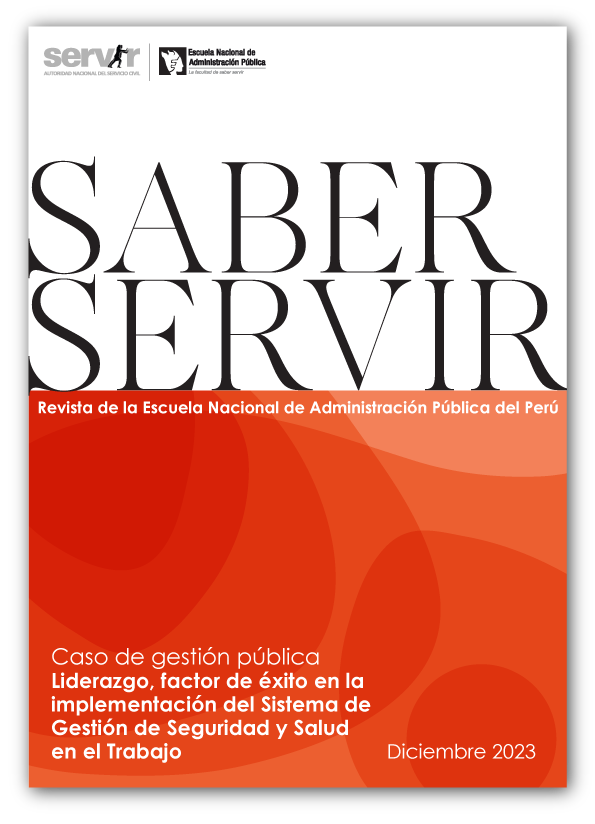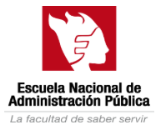“Nudges” for interventions in the Human Resources Policy
DOI:
https://doi.org/10.54774/ss.2023.10.04Keywords:
human resources, cognitive biases, civil servants, behavioral economics, decision makingAbstract
This article shows some successful methodological tools that can be used in the innovation of the design and implementation of human resources policy decisions. behavioral economics draws on psychological research to explain systematic deviations from rational behavior and that, through the application of “nudges”, behavior can be influenced in a predictable way.
It is important to understand the psychological factors that exist behind the decisions of civil servants, as well as to conduct research that allows specific strategies to be applied based on evidence. The studies carried out by Daniel Kahneman, Amos Tversk, Herbert Simon, Richard Thaler, Cass Sunstein, The Behavioral Insights Team of the United Kingdom, the Government Laboratory of Chile and the Inter-American Development Bank (IDB) demonstrate this.
In this sense, some cognitive biases are described, with our own examples, referring to decisions in public management. It is proposed to apply behavioral science through the Do It EAST methodology, developed by The Behavioral Insights Team. It is recommended to use the prototype, test and pilot scheme for the design and implementation of interventions. Finally, the creation of a Government Research and Innovation Laboratory is proposed, which leads a process of change.
Downloads
Metrics
References
Autoridad Nacional del Servicio Civil. (2016). Modelo de Gestión del Grupo de Directivos Públicos del Servicio Civil Peruano. https://www2.congreso.gob.pe/sicr/cendocbib/con4_uibd.nsf/FED03359A13181
Banco Interamericano de Desarrollo. (21 de marzo de 2019). Los desafíos de llevar a escala la economía del comportamiento. Research Department. https://www.iadb.org/es/historia/los-desafios-de-llevar-escala-la-economia-del-comportamiento
Behavioural Insights Team. (s.f.). About us: Who we are. https://www.bi.team/about-us-2/who-we-are/
Behavioural Insights Team. (2018). EAST, Cuatro maneras simples de aplicar las ciencias del comportamiento. The Behavioural Insights Team. https://www.bi.team/publications/east-espanol/
Contraloría General de la república. (25 de septiembre de 2023). Informe N° 21998-2023-CG/GRLIM-SOP. “Verificación de requisitos e impedimentos para el acceso y ejercicio de la función pública”. https://cdn.www.gob.pe/uploads/document/file/5195934/Informe%20consolidado%20del%20Operativo%20de%20Control%20Simult%C3%A1neo%20%22Verificaci%C3%B3n%20de%20requisitos%20e%20impedimentos%20para%20el%20acceso%20y%20ejercicio%20de%20la%20funci%C3%B3n%20p%C3%BAblica%22.PDF?v=1695844086
Redacción EC. (30 de septiembre de 2023). Accidente en Jorge Chávez: Revelan que controladores aéreos estuvieron cansados. El Comercio. https://elcomercio.pe/lima/sucesos/accidente-en-jorge-chavez-determinan-que-tripulacion-de-la-aeronave-no-fue-informada-sobre-ejercicios-de-la-unidad-de-rescate-video-latam-airlines-lap-ciaa-ultimas-noticia/?ref=ecr
Kahneman, D. (2013). Pensar rápido, pensar despacio ( J. Chamorro, Trad.). Debate. (Trabajo original publicado en 2011).
Laboratorio de Gobierno. (2018). Permitido Innovar: Guías para transformar el Estado chileno ¿Cómo podemos resolver problemas públicos a través de Proyectos de Innovación?. Ministerio de Hacienda de Chile. https://www.lab.gob.cl/permitido-innovar
Nesta. (2023). We are Nesta. The UK’s innovation agency for social good. https://www.nesta.org.uk/
OCDE. (2022). Generar Confianza para Fortalecer la Democracia: Resumen con los principales hallazgos de la Encuesta sobre Confianza de la OCDE. https://www.oecd.org/governance/trust-in-government/oecd-trust-survey-main-findings-es.pdf
Oltra, G. Y. (2022). Economía Temas Fundamentales (Colección CÁTEDRA). Konrad Andenauer Stiftung.
Pinto, D. M., Ibarrarán, P., Stampini, M., Carman, K. G., Guanais, F. C., Luoto, J., Sánchez, M. & Cali, J. (2014). Empujoncitos sutiles: el uso de la economía del comportamiento en el diseño de proyectos de salud (Resumen de políticas del BID; 228). Banco Interamericano de Desarrollo. https://publications.iadb.org/es/publicacion/16864/empujoncitos-sutiles-el-uso-de-la-economia-del-comportamiento-en-el-diseno-de
Presidencia del Consejo de Ministros. (2013). Política Nacional de Modernización de la Gestión Pública. Secretaría de Gestión Pública. https://cdn.www.gob.pe/uploads/document/file/353854/PNMGP.pdf
Strazza, L. (2022). Diagnóstico institucional del servicio civil en América Latina: Perú 2022. Banco Interamericano de Desarrollo.
Thaler, R. H., & Sunstein, C. R. (2009). Nudge: El impulso que necesitas para tomar mejores decisiones sobre salud, dinero y felicidad. Penguin.
Thaler, R. H. (2016). Todo lo que he aprendido con la psicología económica. Deusto.
United Nations. (2022). E-Government Survey 2022: the future of digital government. Department of Economic and Social Affairs. https://desapublications.un.org/sites/default/files/publications/2022-09/Web%20version%20E-Government%202022.pdf
Downloads
Published
How to Cite
Issue
Section
License
Copyright (c) 2023 Roque Walter Tejada Olivera

This work is licensed under a Creative Commons Attribution 4.0 International License.
Los contenidos publicados en la revista están bajo una licencia CC-BY 4.0, la cual permite:
- Compartir, copiar y redistribuir el material en cualquier medio o formato.
- Adaptar, remezclar, transformar y construir a partir del material para cualquier propósito, incluso comercialmente.
Bajo los siguientes términos:
- Atribución. Usted debe dar crédito de manera adecuada, brindar un enlace a la licencia, e indicar si se han realizado cambios. Puede hacerlo en cualquier forma razonable, pero no de forma tal que sugiera que usted o su uso tienen el apoyo de la licenciante.
Todos los autores deben descargar, completar, firmar y remitir a través del correo electrónico de la revista revistaenap@servir.gob.pe, la siguiente DECLARACIÓN JURADA DE AUTORÍA Y CESIÓN DE DERECHOS DE AUTOR como requisito indispensable para la publicación del artículo.














